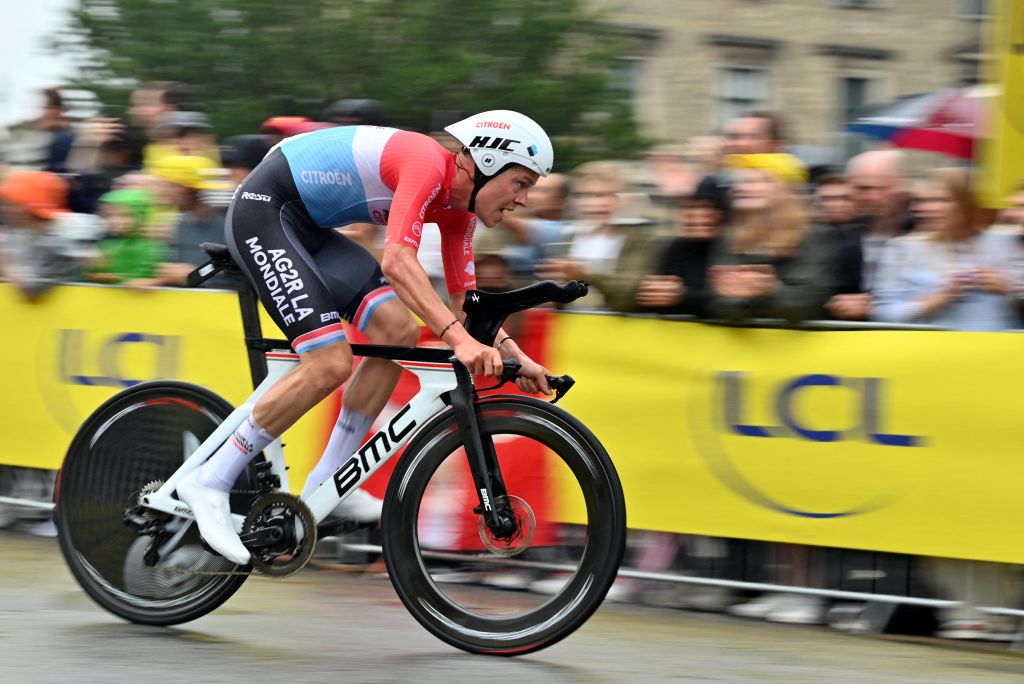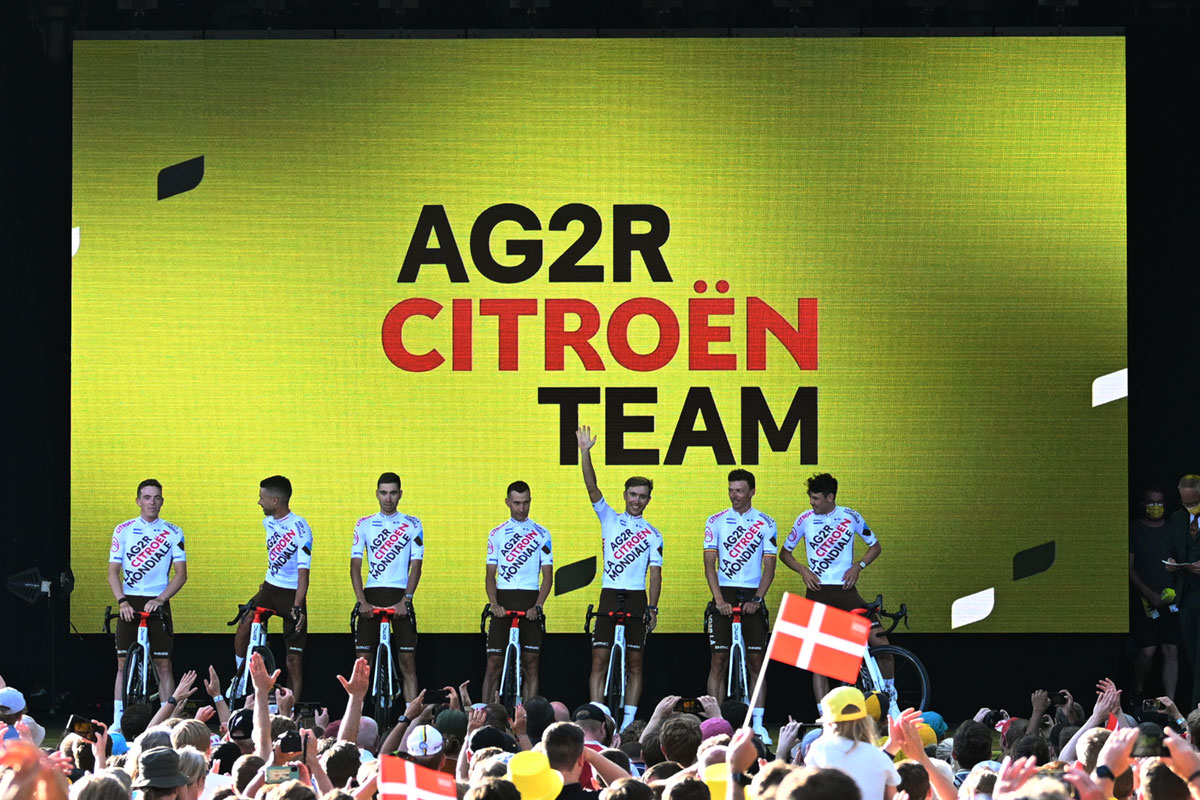How Bob Jungels started the Tour de France while positive for COVID-19
Viral load number key to why Jungels raced on as other riders had to go home

AG2R Citroën rider Bob Jungels tested positive for COVID-19 on Wednesday, tested positive for COVID-19 on Thursday, and started the Tour de France on Friday.
Those facts seem shocking on the face of it, but the Luxembourger was not breaking any rules, and nor did this come to pass because of any supposed relaxation of those rules by the sport's governing body, the UCI.
In fact, the UCI signed off on Jungels' participation, as did the race organisers, as well as his own team.
In contrast, numerous riders – including Tim Declercq and Matteo Trentin – were late scratches from the start list after testing positive. So how can someone who tests positive for COVID-19 be allowed into a bike race?
The answer lies in what's called a CT – standing for Cycle Threshold – score. PCR tests work through a device that cycles the sample and mops up viral particles as it goes around. The longer it takes to find the virus, the higher the CT score, and the lower the viral load. The lower the number of cycles needed to hit the virus, the lower the score, and the higher the viral load.
Rather than a simple 'double line' on an antigen test, or even analysis of the faintness of the line, testing in this way can accurately determine how contagious someone is.
"The important question is the threshold from which you are infectious," AG2R Citroën doctor Thomas Klimaschka told Cyclingnews. "If your score is over 30, it's extremely rare you're infectious. If you're over 35, you're not infectious.
Get The Leadout Newsletter
The latest race content, interviews, features, reviews and expert buying guides, direct to your inbox!
"The old antigen tests didn't catch people with values over 30. Now, one third of cases between 30 and 35 are found, but you still won't find any positive antigen test for 35."
Jungels' score on Wednesday was "close to 30". On Thursday, it was 38, say the team.
For Klimaschka, having the two values to compare was the key. Similarly, to the biological passport, it allowed them to plot the "journey" of the virus, and deem that Jungels' viral load was decreasing and not the other way around.
"With one value, you don't know if it's coming from above or below. You don't know the movement.
"If the score goes lower and lower, then he has to go out of the race. But in Bob's case it went up, straight up to 38. 38 is not infectious."
The UCI declined to comment on the matter when contacted by Cyclingnews. Over at the UAE Team Emirates bus, doctor Adriano Rotunno backed up the theory.
"The virus is a strange thing. Your PCR test can still be positive weeks and months after you catch it. The PCR can pick up a thing called viral ghosting, so it picks up old virus. Even if you have old virus, you're not infectious, but because you're PCR is positive, people are going to think 'this person is positive'."
That said, Rotunno indicated that the CT score was only one piece of a puzzle that also includes the rider's clinical condition.
"You would also have to take their clinical picture, check the body is fine, they're not febrile, hopefully check the heart out, and if all the boxes are ticked and they're deemed medically fit, despite it appearing on the PCR, they're not infectious and they're safe to ride."
The AG2R doctor confirmed that Jungels had not undergone a cardiac screening, saying it was "not necessary".
New rules

The waters were muddied earlier this week when the UCI released an updated version of its COVID-19 protocol. Billed as a tightening of regulations amid a new COVID-19 wave, it was arguably more a watering down, the biggest development being that teams with two riders testing positive no longer have to send their whole squads home.
The new regulations were seen by some as a loophole, allowing riders who tested positive to potentially race. However, there was no substantial change in that regard.
Both the January version of the protocol, and the latest one from last week, read: "In case of a positive PCR test returned during the course of a stage race, the rider or staff member concerned shall be excluded from the Event. Derogations may, however, be granted by the UCI medical director in coordination with the Covid-doctor of the Event, if it is established, at his comfortable satisfaction, that the rider or staff member concerned is not contagious and not likely to infect third persons."
The difference when it comes to Grand Tours is the decision-making process in the event of a positive case. Before, the decision fell to the UCI. Now, "the decision will be taken by a majority of the panel" which is made up of the race doctor, UCI medical director, and doctor of the team in question.
"To my knowledge, they did not really change anything," said Klimaschka.
Rotunno added: "The three-way discussion was the case anyway, since COVID-19 came around. That's best practice. I don't know if it's a vote. It potentially could come down to that but generally it's not going to be massively up for debate."
In Jungels' case, he did not test positive during the race but in the lead-up to it. The regulations state that a negative test – now antigen rather than PCR – of "less than two days old" is needed to enter the race bubble. Jungels missed his national championships road race last Sunday due to gastric problems and it was not known when he first caught COVID-19.
He travelled to Copenhagen on Tuesday and was isolated after his Wednesday test before rejoining his teammates once he'd received the all-clear Thursday evening.
Klimaschka indicated that a positive case that emerges now the race is underway stands less chance of continuing in the race, but it's not impossible.
In theory, a rider could catch COVID-19 and get over it to the extent that they test positive on a rest day with a very high CT score, therefore necessitating a discussion and decision over whether he is or isn't contagious and can or can't continue. However, the UCI "strongly recommends" antigen testing "if possible, daily but at least every two to three days".
According to Rottuno, the rules do create a grey area, albeit a small one.
"It's not always black and white, but you can generally come up with a logical decision. It's potentially open to abuse but you would hope that everyone ticks all the boxes to make sure it's safe to proceed."
UAE Team Emirates had a case of their own in the days before the Tour, with Matteo Trentin testing positive and being replaced by Marc Hirschi. In this case, Trentin's CT score was "very low" meaning he had a high load of COVID-19 and was infectious.
"It would have been a risk to himself, his own health, to his team, and the cycling community. We could not ethically put this rider in the race. It's poor medical practice. That was the reason we pulled him."
The Tour de France continues with 176 riders having started the race. The other change to the UCI's COVID protocol was the introduction of antigen testing on the rest days, as opposed to PCR tests. If a positive antigen result is returned, the person in question will then have to take a PCR test.
After the flood of positives in the pre-Tour testing, Monday's first rest day is going to be a nervy affair for many.
Patrick is a freelance sports writer and editor. He’s an NCTJ-accredited journalist with a bachelor’s degree in modern languages (French and Spanish). Patrick worked full-time at Cyclingnews for eight years between 2015 and 2023, latterly as Deputy Editor.
